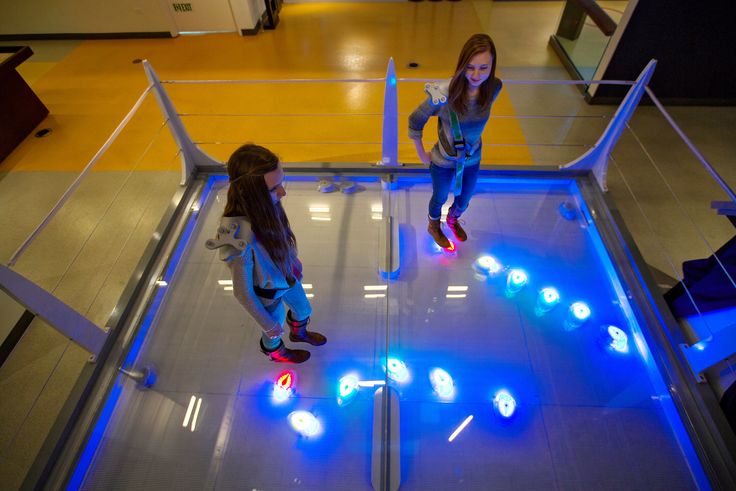Systems Thinking & Embodied Learning
Can math and robots teach students about behavior and systems thinking? Through human computer interaction and applied learning sciences, math with the help of some clever engineering and robots comes to life! At the National Museum of Mathematics in Manhattan (known as MoMath), a new exhibit called Robot Swarm is in the final testing before opening on December 14th.
A small group of mathematicians, designers and engineers have put together the nation’s most technologically ambitious robotics exhibit. Depending on the mode, these robots beneath a 11 x 12 foot glass floor will swarm, skitter and react to whoever is standing on top of the glass. Cameras above sense visitors in the space with the “reflector pod” which then transmit information to the robots moving in accord with a variety of programmed settings determined by visitors working a control panel.

Playing with and watching these robots creates an interactive platform that demonstrates the mathematics of emergent behavior. Students begin to understand systems thinking by understanding the roles of the players, the robots, and their relationships.
“The rules that govern the movement of the robots are very simple and easy to state mathematically,” said Dr. Whitney, who conceived the exhibit in 2009. “It’s not like each robot is transported out of its body and can see the entire play area. They understand what’s going on in their neighborhood. It’s a matter of doing something little and simple, and following the rules. What you get is more than the sum of the parts.”
Much like our Particle Predator Scenario, local interactions lead to large-scale organized behavior as seen with predators and prey yet they can be boiled down to mathematical principles understanding how behaviors could have evolved. In our Particle Predator Scenario, students can set the rules that define the interactions between each of the six particles including which particles destroy other particles and which replace other particles. Setting rules and testing theories, students are encouraged to create a balanced and engaging game by manipulating the underlying rules between the particles.
Read the whole article here.
